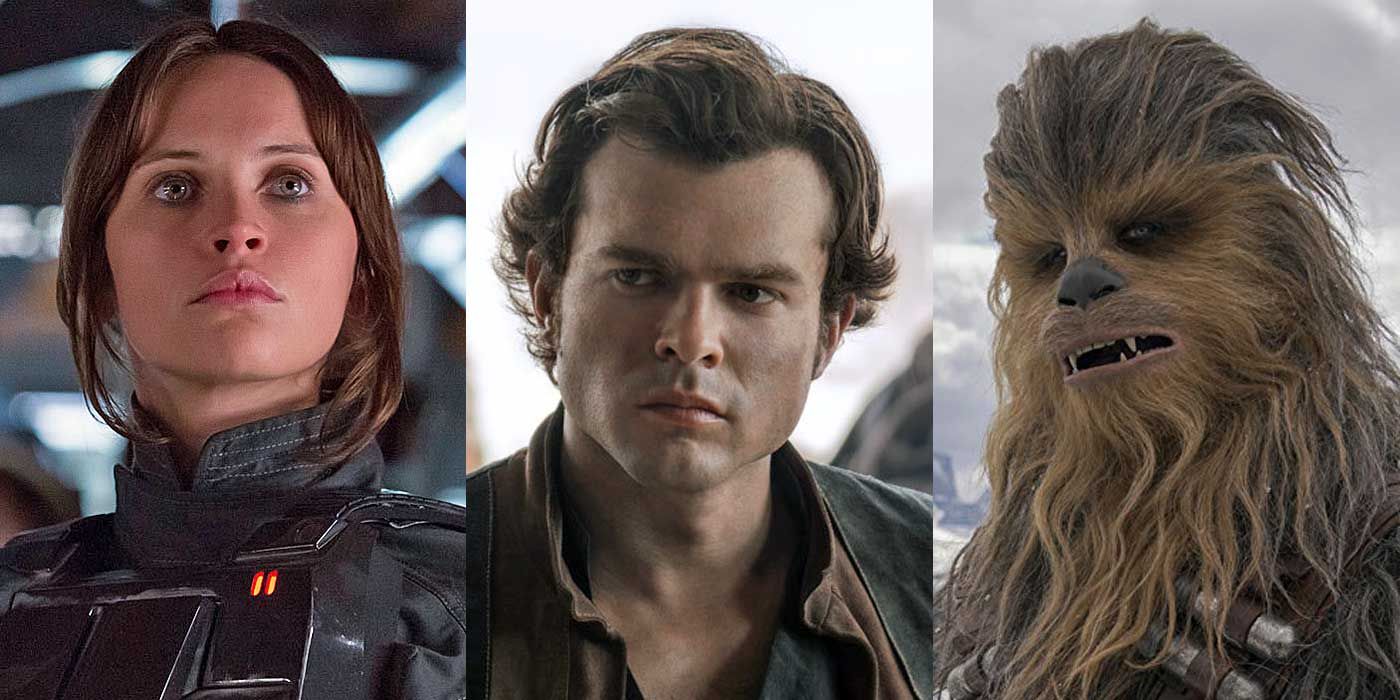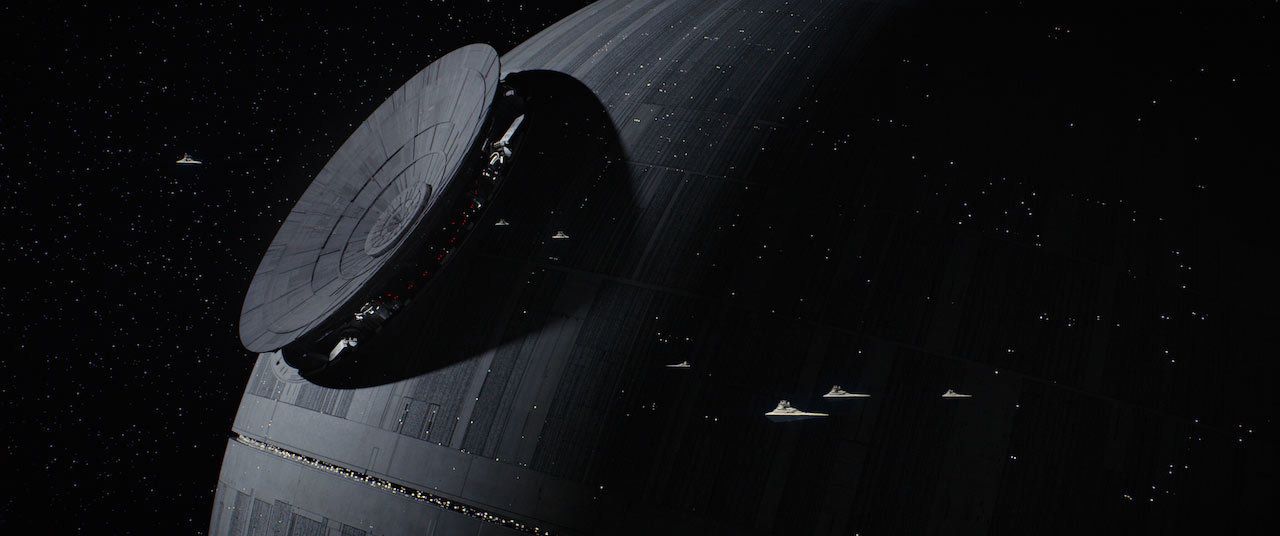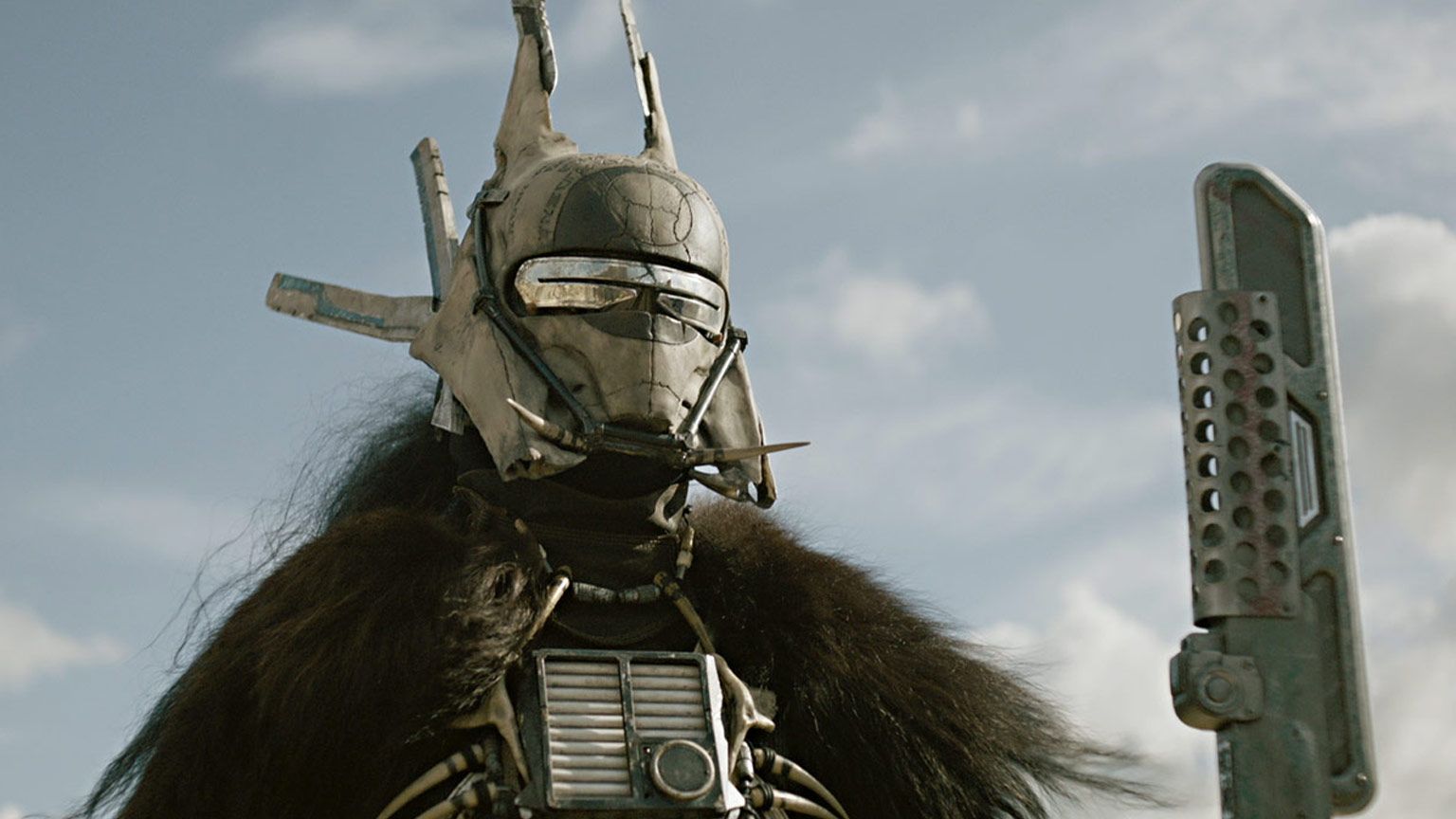WARNING: The following article contains spoilers for Solo: A Star Wars Story, in theaters now.
Solo is the second Star Wars anthology film that pits a sometimes-reluctant, always ragtag-team of crooks and rebels against the Imperial war machine. But where 2016's Rogue One puts Jyn Erso and company in direct conflict with the Empire, to secure Death Star plans for the Rebel Alliance, Han Solo and friends are busy trying to outsmart the cartels that have sprung up in the Empire’s shadow. The ethical hinge of Solo’s third act, to serve only yourself or to oppose the Empire, is the same question Jyn faces in Rogue One. But Solo understands its protagonist and his place in the galaxy much better than did Rogue One, and it answers this question far more satisfyingly. With better heists and better commentary on the evils of war, Solo is the movie Rogue One wanted to be ... only fun.
What divides Solo and Rogue One is their endings -- one is a bittersweet adventure, the other is a tragedy -- and their effectiveness, but the plots of both are defined by a series of capers, each one more dramatically and ethically complicated than the last. The team is made and remade, characters are tested, plans are hatched, and everything comes together somehow for that final heist. Both rely on the chemistry of the group, the charm of the characters and our investment in their struggle, but only one pulls it off. Rogue One, in trying to shoehorn in more political factions, neglects its core characters. It skimps on building the team in favor of grand speeches from Rebel leaders, Imperial leaders, and other Rebel leaders, even giving otherwise sullen Jyn a moment on the dais. The effect is a lesser heist movie inside a lesser war epic, with one halfway-decent infiltration scene and a brief but explosive space battle. The movie is confused, and nowhere is that more apparent than in its lead.
RELATED: Solo: A Star Wars Story -- Where Did It All Go Wrong?
In Solo: A Star Wars Story, we meet younger Han in the middle of a caper, double-crossing a Corellian crime lord to keep the prize for himself: enough refined hyperfuel, or coaxium, to get him and his girlfriend Qi’ra, off the planet for good. Director Ron Howard and the production team tell us all we need to know about Corellia with lingering shots of the planet’s vast shipyards reveal them to be dirty and crowded, huddled beneath the shadows of mammoth Imperial ships. When Han and Qi’ra try to escape through the spaceport, the building is a drab, fascist nightmare. Similarly, they want you to know Han through his actions and his presence. This first, quick-moving sequence tells us all about Han and what he can do: He’s a fast-talking, faster-driving survivor who’s too sentimental for his own good. It ends in Han’s first compromise with the Empire, as he signs up for the Naval Academy in hopes of becoming a pilot and returning to rescue Qi’ra.
Page 2: [valnet-url-page page=2 paginated=0 text='Rogue%20One%20Is%20a%20War%20Movie%20That%20Never%20Prosecutes%20the%20War']
In contrast, we meet Jyn Erso first through her father. Galen Erso, designer of the Death Star, has hidden away on some agrarian fantasy world in hopes of preventing the Empire from completing the battle station. He’s kidnapped by old colleague Orson Krennic, and Jyn is orphaned, rescued, and then orphaned again, once she breaks with her other plot-significant father figure. We meet adult Jyn in a cramped, nondescript prisoner carrier from which she’s liberated by Rebel pilot Cassian Andor. She does little through all of that or, indeed, the rest of the film. Jyn remains a protagonist significant only through her relationship to others, primarily her fathers. Until Jyn and Cassian land on Jeddha, looking to take Imperial defector Bhodi from the tender care of Jyn’s foster father, Rogue One lacks a sense the tangibility and immediacy that Solo establishes so quickly. Lots of overhead shots but few real places. Rogue One may position its heroes as the other guys, the little guys fighting the important off-screen battles so that legendary heroes like Luke Skywalker can get in the killing blow, but it spends an awful lot of time with Imperial and Rebel leaders, and their machinations.
RELATED: Solo's Lingering Questions and Biggest Plot Holes
We see the suffering people of Jeddha but we don’t get to hear much from them. Fan favorites Chirrut and Baze have only marginal roles to play in the film’s war of speeches. They get off a few chestnuts of wisdom but don’t truly challenge Jyn or Cassian’s world views. They aren’t given the opportunity to offer another angle on the conflict; but they are allowed to show off badass combat skills. Similarly, ex-Imperial pilot Bhodi does some piloting, but we never know why he chose the Imperial Academy, or what that cost him. The net effect of this is a war movie that never actually prosecutes the war, and a group of people opposed to it for murky reasons. Obviously the Empire is bad, but because the only reason for these characters to exist in Star Wars canon is to oppose it, it might be helpful to hear from them why they've joined in the fight.
Contrast that with Solo’s Enfys Nest and her band of freedom fighters. They’re introduced early on in the film as marauders who have dogged the crew since their first outing. The revelation that they’re some of the earliest seeds of the anti-Imperial resistance is crucial to the film: It’s what turns Han away from Tobias, and what gives Qi’ra an opportunity to kill her master and take his place. That Enfys Nest gets to tell their story herself and fight for her people adds richness to the film, resonating with L3-37’s struggle for droid liberation, and placing the choices made by Han and Qi’Ra into perspective. Solo introduces us to the underclasses of the Empire and their varying responses to their situations -- resistance, compromise and collaboration -- and it does so through character, setting and action, in a way that feels entirely natural.
RELATED: Solo Finally Addresses One of the Most Troubling Aspects of Star Wars
Rogue One’s production was almost legendarily troubled. Screenwriter Tony Gilroy, who oversaw the film’s substantial reshoots, said the film lacked “purity” before he came onto the project. One of the biggest changes he oversaw was the film’s ending, which Rogue One actor Ben Mendelsohn described as “enormously” different than director Gareth Edwards’ first cut. The seams in Rogue One, where the differing visions of Edwards and Gilroy and Lucasfilm don’t quite meet are all too evident. Jyn is just one of them. Rogue One is a sort of satisfying story, but one that never gels: not quite a heist movie, not quite a war movie, but definitely, for some reason, a daddy-and-daughter movie.
In theaters now, director Ron Howard’s Solo: A Star Wars Story stars Alden Ehrenreich as Han Solo, Donald Glover as Lando Calrissian, Emilia Clarke as Qi’ra, and Joonas Suotamo as Chewbacca. They’re joined by Thandie Newton as Val, Phoebe Waller-Bridge L3-37, Paul Bettany as Dryden Vos, and Woody Harrelson as Tobias Beckett.



